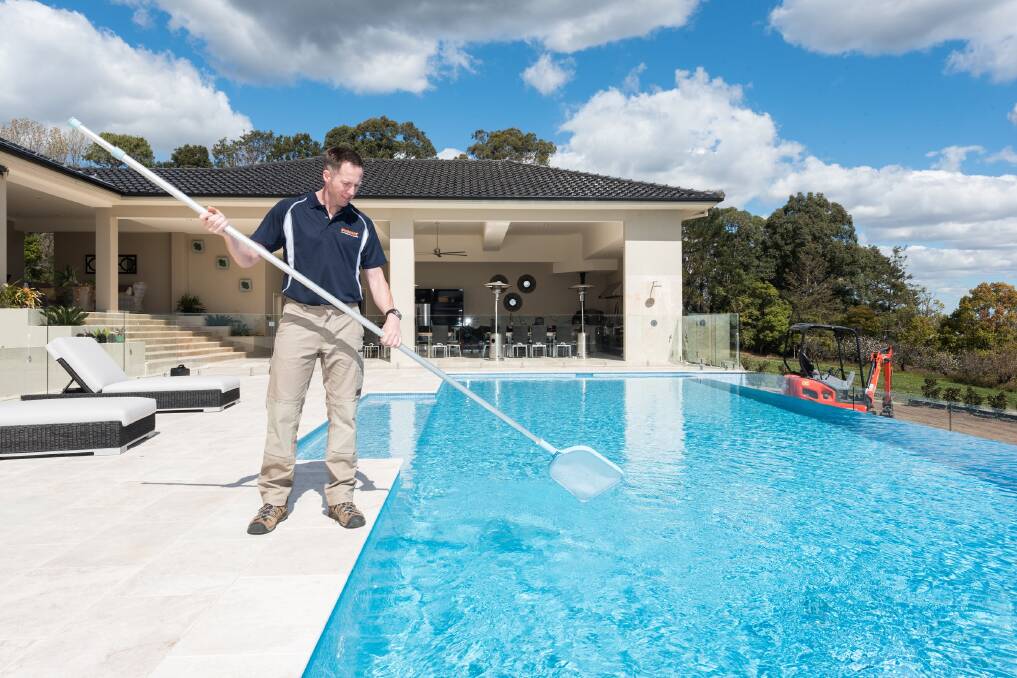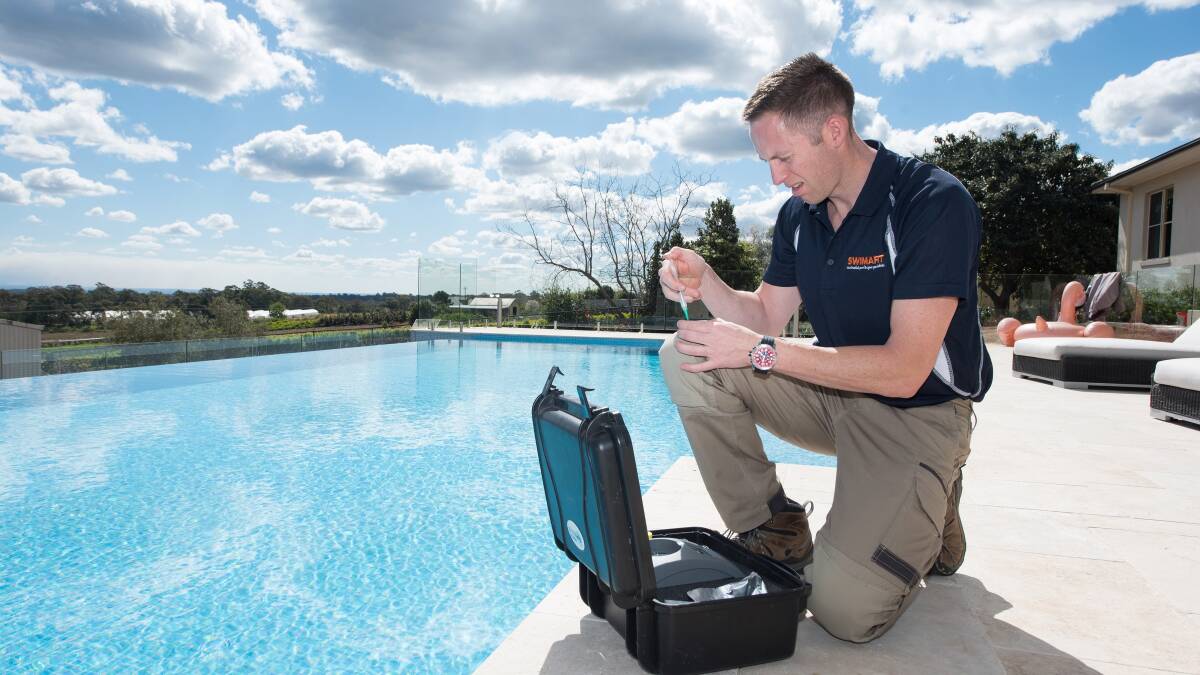
With a warmer-than-average spring predicted for most of Australia, now is the perfect time to prepare your pool.
Subscribe now for unlimited access.
or signup to continue reading
“Over winter, sun and rain dilutes pool chemicals, especially chlorine and salt, which turns pool water green and helps algae get a hold and grow,” Swimart Australasian manager Chris Fitzmaurice said.
Aside from making any pool look uninviting, algae can damage pool equipment and make swimmers ill as it often harbours bacteria like E. coli.
Here are five steps to get your pool ready:
Step 1. Take a sample of your pool water to your local Swimart store for a free computerised test. The results will indicate whether your pool needs its pH, calcium and total alkaline levels adjusted.
Step 2. Before you add any products to your pool, run your pump for a few hours to help clear debris and dirt from the water. While the pump is doing its job, check the filter, skimmer box and pump to ensure they are all working efficiently and clear any blockages or calcium build-ups.
Step 3: Your pool water may need to be sanitised to condition and ready it for other treatments. Swimart recommends a chlorine-free treatment called Aqua-Health Ultra Shock, which destroys organic waste and leaves your pool water clean and sparkling. Simply dose while the pump is running and wait a few hours before swimming.
For a more rapid sanitising effect, Aqua-Health’s Instant Pool Chlorine Pellets can be added straight to the skimmer without the use of a floating dispenser. They’re easy to use, have a built-in stabiliser, and do not alter water hardness.
Step 4. Treat your pool water with the products and dosages recommended by your local Swimart technician. Depending on your pool’s current water quality, you may need to add chlorine and algaecide and acid to adjust the pH level (the optimal level is between 7 and 7.6). Getting your pool water’s pH level right is important as it dictates how much chlorine turns into hypochlorous acid (HCIO), an active ingredient needed to kill germs, algae and bacteria.
Step 5. Brush your pool’s walls, which helps remove algae and loosen dirt, then follow with a vacuum.
And finally: Ensure the area surrounding your pool is free of uneven pavers or obstacles that may cause accidents.
Also, check your pool fence, child-proof gate and latch are in good working order, put a Resuscitation Chart pool side, and move any furniture and pot plants away from the pool fence so young children can’t use them to climb into the pool area.
Remember to supervise children when they are in the pool area – especially if they haven't swum in the pool since last summer.
“Spring is a good time to reacquaint or re-enrol your kids in swimming lessons,” Chris said.
To find a swim school in your neighbourhood, visit the Royal Life Saving Society swim school locator.


